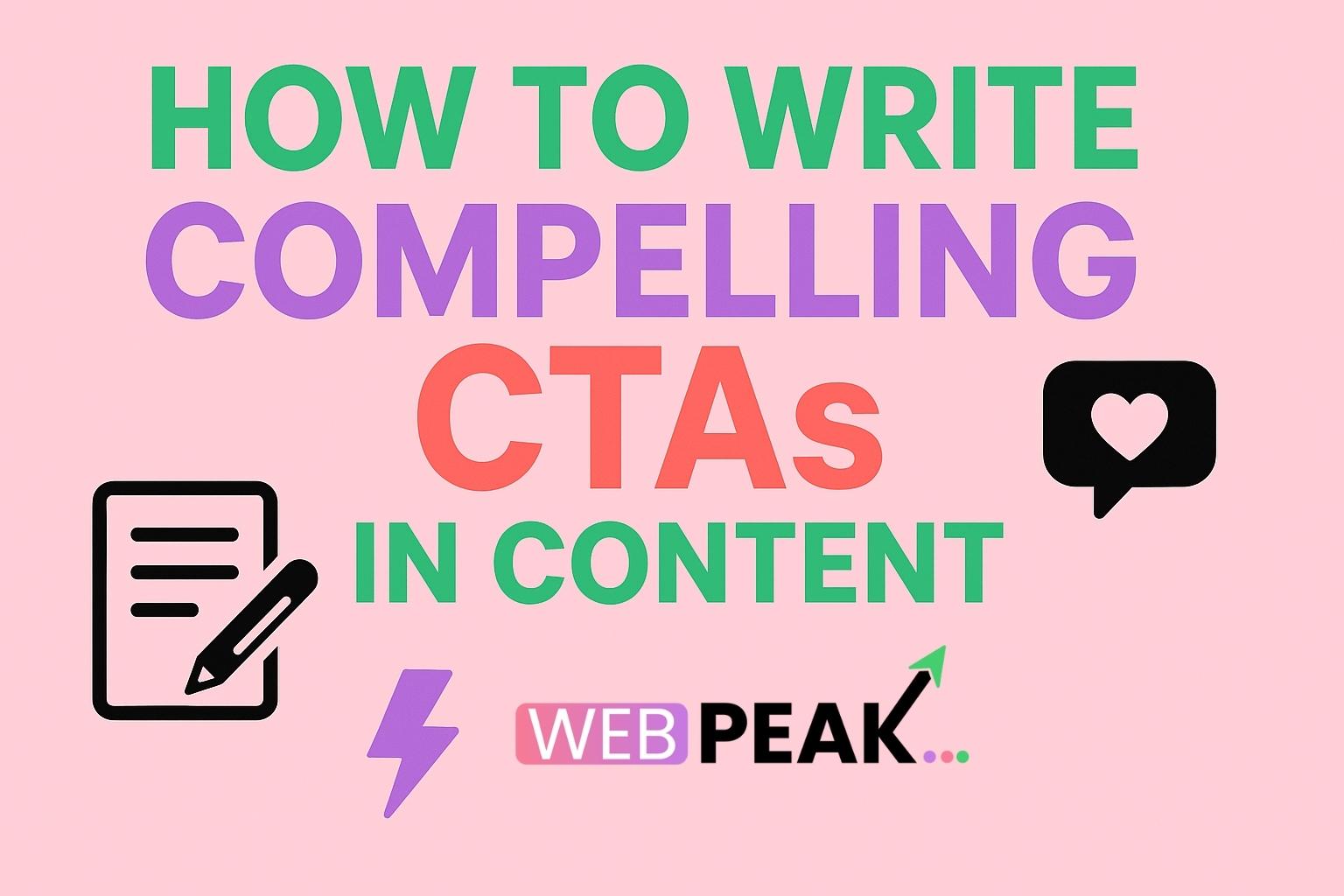How to Write Compelling CTAs in Content
Knowing how to write compelling CTAs in content can make the difference between readers simply browsing your page and actually taking the desired action — whether that’s subscribing, purchasing, or contacting you. A strong call to action (CTA) is the bridge between engagement and conversion. In this detailed guide, you’ll learn actionable strategies to craft CTAs that capture attention, inspire clicks, and ultimately drive measurable results. Let’s dive in.
What Is a Call to Action (CTA)?
A call to action (CTA) is a prompt that encourages users to take a specific next step. It can appear as a button, link, sentence, or even a short paragraph designed to persuade readers to act. Examples include “Sign Up Now,” “Get a Free Quote,” or “Download the Guide.”
CTAs are essential components of marketing and content strategies, guiding visitors down the conversion funnel. Whether used in blog posts, landing pages, or social media content, a compelling CTA influences behavior by offering clarity, urgency, and value.
Why Writing Compelling CTAs Matters
Without an effective CTA, even the best content can fall flat. CTAs serve as conversion drivers — they translate interest into measurable outcomes. Here’s why they matter:
- Increases engagement: Clear CTAs give readers a reason to interact.
- Boosts conversions: Whether it’s signing up or purchasing, CTAs guide users toward taking action.
- Improves user experience: They provide direction and remove confusion about what to do next.
- Supports SEO goals: When visitors engage with CTAs, dwell time and conversion signals improve overall site performance.
How to Write Compelling CTAs in Content
Creating a CTA that converts involves psychology, strategy, and design. Below is a step-by-step process with proven techniques to craft powerful CTAs for any type of content.
1. Understand Your Audience and Intent
Before writing, identify what your audience needs and where they are in the buyer’s journey. A new visitor may respond to “Learn More,” while a returning customer might prefer “Get Started Today.” Tailoring CTAs based on intent ensures relevance and resonance.
- Research your target audience’s pain points.
- Use analytics to track user behavior and engagement patterns.
- Craft CTAs aligned with the user’s decision-making stage (awareness, consideration, decision).
2. Focus on Action-Oriented Language
Use strong, active verbs to prompt immediate action. Avoid vague language. For instance, instead of “Click Here,” try “Start Your Free Trial” or “Get Expert Advice.” These are specific and convey a clear benefit.
Examples of effective action verbs: Get, Try, Discover, Join, Claim, Start, Download, Build, Learn.
3. Highlight the Value or Benefit
People act when they perceive value. Make sure your CTA answers the question: “What’s in it for me?” Clearly communicate the benefit they’ll receive by taking action.
For example:
- “Download the eBook to master content marketing strategies.”
- “Join 10,000+ marketers who boosted conversions using this checklist.”
4. Create a Sense of Urgency
Urgency motivates quick action. Words like “Now,” “Today,” and “Limited Time” signal scarcity and encourage readers not to delay. However, authenticity is key — avoid fake urgency, as it can harm credibility.
Examples:
- “Sign up now — offer ends soon!”
- “Claim your spot before registration closes.”
5. Keep CTAs Short and Clear
Concise CTAs perform best. Aim for clarity over creativity. A good rule of thumb is to limit CTAs to 2–6 words for buttons and up to one short sentence in text-based CTAs. Cluttered or ambiguous CTAs confuse users and reduce conversions.
6. Match CTA Style and Placement with Content
Design and placement are as important as wording. Your CTA should stand out visually without being intrusive. Consider:
- Button color contrast: Use colors that draw attention but align with your brand palette.
- Whitespace: Surround your CTA with space so it’s easy to spot.
- Strategic placement: Place CTAs where engagement peaks — after valuable content, near the top of a page, or midway through an article.
7. Personalize Your CTAs
Personalization can significantly increase click-through rates. Use dynamic CTAs that adapt based on the reader’s behavior, location, or preferences. Even simple personalization like “Start Your Free Trial” instead of “Start a Free Trial” can make a psychological impact.
8. Test and Optimize Your CTAs
No CTA is perfect from the start. Conduct A/B testing to discover which wording, color, or placement works best. Analyze performance metrics such as click-through rate (CTR), conversion rate, and time on page to refine your CTAs continuously.
Key metrics to track:
- CTA Click-Through Rate (CTR)
- Conversion Rate
- Bounce Rate
- Scroll Depth and Time on Page
9. Use Emotional Triggers
Emotions drive decisions. Craft CTAs that connect emotionally through curiosity, desire, or fear of missing out (FOMO). Emotional appeal helps readers connect with your offer on a deeper level.
Examples:
- “Don’t miss out — grab your free guide today!”
- “Join thousands of success-driven entrepreneurs like you.”
10. Ensure CTA Consistency Across Channels
Maintain a unified message across all marketing platforms. Whether it’s your website, email campaigns, or ads, your CTA should reinforce the same goal and tone. Consistency builds trust and brand recognition.
SEO Checklist for Writing CTAs That Convert
To ensure your CTAs not only attract attention but also improve search visibility, follow this actionable SEO checklist:
- Use target keywords: Naturally include your main keyword within the CTA context and surrounding text.
- Optimize surrounding content: Support CTAs with valuable, keyword-rich content for SEO strength.
- Leverage internal linking: Link to related resources to keep readers engaged and boost site authority.
- Optimize for mobile: Ensure CTAs are easily clickable and visible on smaller screens.
- Improve page speed: Fast-loading pages increase engagement and conversion rates.
- Use schema markup: Highlight offers and CTAs using structured data to stand out in search results.
- Include CTAs in meta descriptions: A compelling CTA in your meta description can boost organic click-through rates.
- Analyze engagement metrics: Regularly track CTA performance using Google Analytics or heatmap tools.
Common CTA Mistakes to Avoid
Even well-meaning marketers make mistakes that can weaken a CTA’s effectiveness. Avoid these pitfalls:
- Using generic text like “Click Here” with no context.
- Overloading pages with multiple CTAs that confuse users.
- Failing to test performance and optimize regularly.
- Neglecting mobile users with small or misplaced buttons.
- Ignoring the emotional and psychological aspects of persuasion.
Examples of High-Converting CTAs
Here are some proven CTA examples from successful campaigns across different industries:
- Software/Tech: “Start Your Free 14-Day Trial — No Credit Card Required.”
- E-commerce: “Add to Cart — Free Shipping Today Only!”
- Education: “Enroll Now to Advance Your Career.”
- Service Business: “Schedule Your Free Consultation.”
- Blog/Lead Magnet: “Download the Free Checklist to Boost Conversions.”
Integrating CTAs Across Content Types
CTAs should be woven seamlessly into various types of content to drive engagement throughout your marketing funnel.
Blog Posts
Use CTAs to guide readers to related posts, subscribe to newsletters, or download resources. Keep them relevant to the topic to enhance engagement.
Landing Pages
Landing pages should focus on a single, clear CTA. Eliminate distractions and ensure all elements support the desired action.
Email Campaigns
Emails with one focused CTA often outperform those with multiple. Keep the message concise and visually distinct.
Social Media Posts
Incorporate conversational CTAs that match the tone of the platform. For instance, use “Comment below to join the discussion!” or “Tap the link in bio to get started.”
Partner with Experts to Maximize Your CTA Strategy
If you’re ready to take your digital strategy to the next level, consider partnering with WEBPEAK — a full-service digital marketing company offering expert Web Development, Digital Marketing, and SEO services. Their team can help you craft optimized CTAs that align with your brand voice and conversion goals.
FAQs About Writing Compelling CTAs
1. What makes a CTA effective?
An effective CTA is clear, action-oriented, and aligned with user intent. It uses strong verbs, highlights value, and creates a sense of urgency or exclusivity.
2. How many CTAs should I include on a page?
Ideally, one primary CTA per page or section works best. Too many CTAs can confuse visitors and reduce conversion rates.
3. Where should I place CTAs in blog content?
Common high-performing spots include after the introduction, mid-article (contextual CTAs), and at the end of the post.
4. Should CTAs differ for mobile and desktop?
Yes. Mobile CTAs should be larger, centrally placed, and easy to tap. Ensure they load quickly and remain visible as users scroll.
5. How do I test CTA effectiveness?
Use A/B testing tools like Google Optimize or HubSpot to test variations in wording, color, or placement. Analyze metrics such as CTR and conversion rates to determine the winner.
6. How long should a CTA be?
For buttons, aim for 2–6 words. For contextual CTAs within text, a concise sentence is ideal. Clarity always outweighs cleverness.
Conclusion
Learning how to write compelling CTAs in content is one of the most valuable skills in digital marketing. A well-crafted CTA transforms passive readers into active participants, improving conversions and strengthening your content’s impact. Focus on clarity, value, emotional appeal, and strategic placement. And don’t forget — always test, analyze, and refine for continuous improvement.
By implementing these actionable strategies, you’ll create CTAs that not only capture attention but also drive meaningful results across all your marketing channels.





